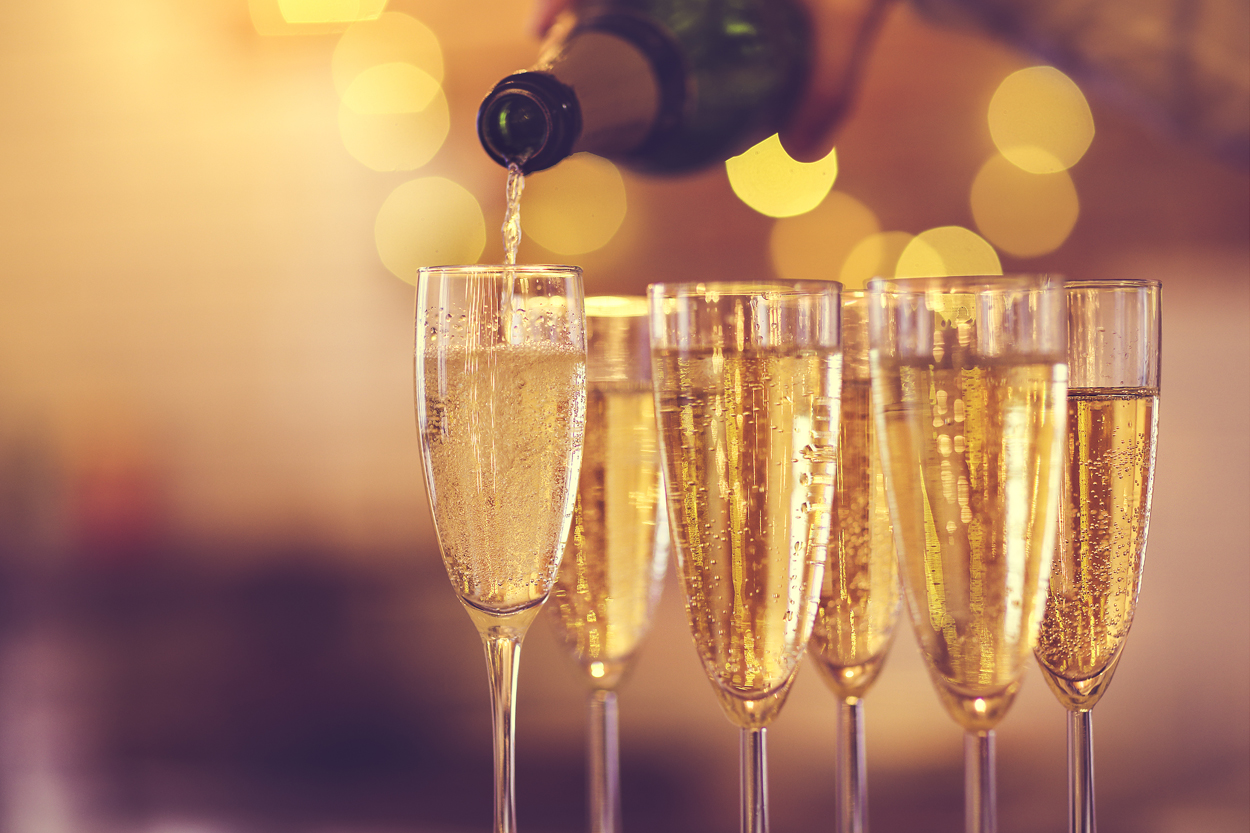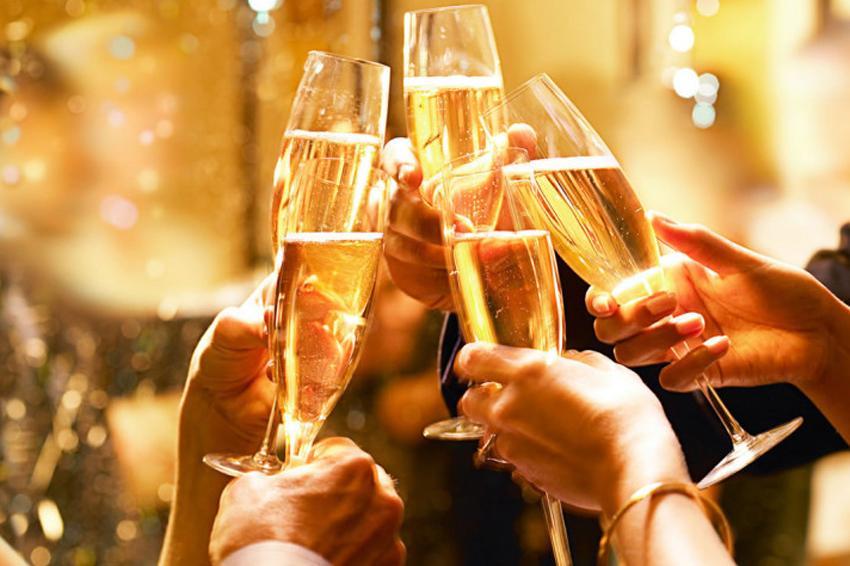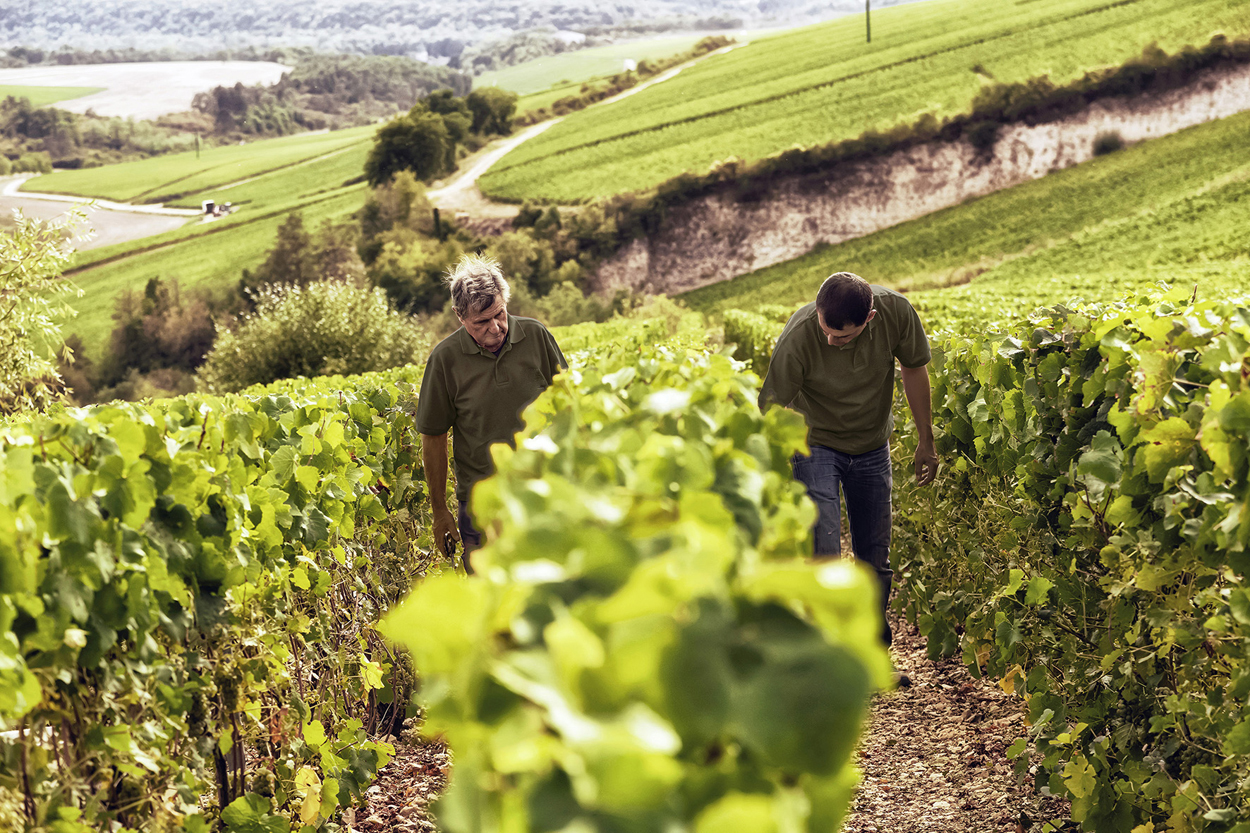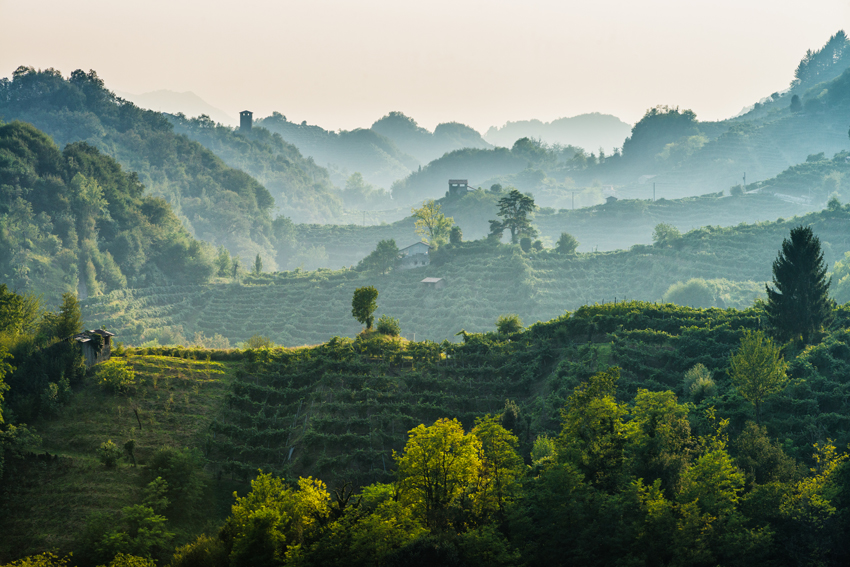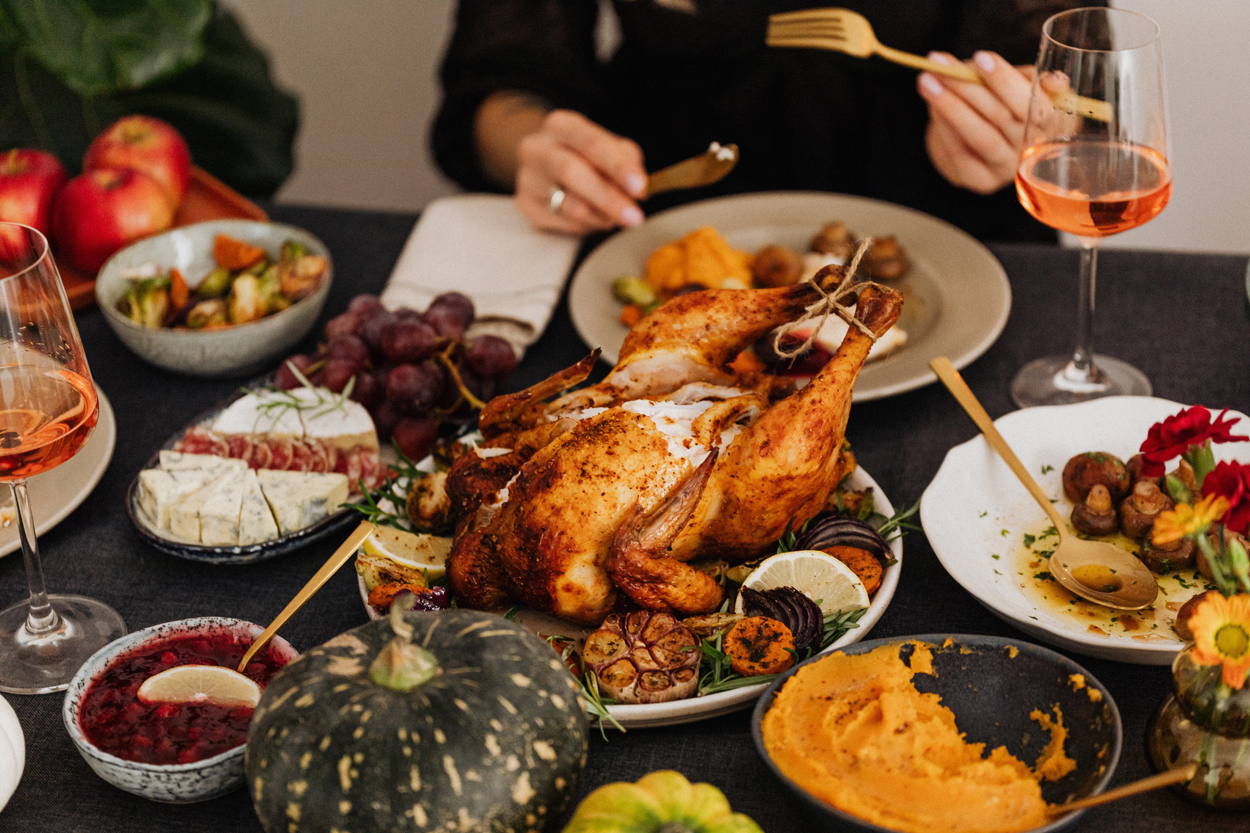What is it about Champagne? The first choice for celebrations of love, success and life's rites of passage for generations, the exclusive sparkling wines from the Champagne region of France hold a special place in the world of wine. The most northerly of France's wine regions, Champagne's history of sparkling wines dates back to 1668 when Dom Perignon, a local monk, is said to have created the method still used to produce Champagne today.
The chalky soils of Champagne are home to Chardonnay, Pinot Noir and Pinot Meunier, all employed in a typical Champagne blend. The northerly location of the vineyards means that ripening can be a problem, so using a blend of grapes is critical. Most typically made in a brut, or dry style, non-vintage (NV) Champagne is a blend of wines from a number of years. Vintage champagnes, made only in the best years, are aged extensively before release, creating richer, biscuity flavours.
The global demand for Champagne has accelerated in the last two years and this growth is set to continue. The UK is the second largest consumer of Champagne, after the United States. The UK consumed almost 30million bottles last year! Whilst the duty on Sparkling Wine decreased in August this year by 19p per bottle, the production costs, including labour, energy and packaging materials have increased significantly which have contributed to the overall increase in Champagne prices. The glass bottles alone have increase in cost by 40%. We work closely with our Champagne suppliers to secure excellent allocations of all the best Champagnes. All you need to do is decide which style suits you! To help you, we have put together a guide to different Champagne styles, along with our top recommendations...
Non-Vintage Champagne
This is the most important category and flagship wine for any Champagne house. Due to the region’s marginal climate, where the grapes have historically struggled to ripen, blending different base wines is necessary as there is wide vintage variation. Approximately 80% of total Champagne production is non-vintage which means it is a blend of several vintages. Champagne houses blend for consistency which enables them to produce their signature house style year after year. NV Champagnes are subjected to a minimum of 15-month ageing requirement in contact with the lees (dead yeast cells) but most houses exceed this minimum to develop the delicious signature biscuity brioche notes. An NV Champagne can be consumed on release but many benefit from a couple of extra years ageing in the bottle as they can develop more complex flavours. A perfect aperitif, or served with shellfish, sushi, light savoury dishes and, of course, your Christmas canapes!
Our top picks:


Jacques Boncoeur Brut Reserve Champagne NV
We are very proud of our house champagne which has received a ‘Sustainable Winegrowing’ Certification (the first Champagne house to achieve this accolade), a silver medal in the Decanter awards and a feature in Jancis Robinson's ‘best bubbles for Christmas 2022’ selection in The Financial Times. Beautiful aromatic complexity of green apples, lemon citrus with undertones of brioche and hazelnut.


Gosset Grande Reserve Champagne NV
Gosset have been making Champagne in the village of Ay since the 18th Century and have taken great care and attention in doing so. The Grand Reserve Brut is made with a blend of the traditional varietals of Pinot Noir, Chardonnay and Pinot Meunier. This blend has a high proportion of both Pinot Noir and Pinot Meunier which provide body and length as well as fruitiness to the wine.
Rosé Champagne
Rosé Champagne has increased in popularity over recent years, and rightly so! Interestingly, Champagne is one of the few places in world where you are legally allowed to blend red and white still wines to make rosé. Typically, winemakers blend about 15% still red wine (from Pinot Noir or Pinot Meunier) into the final wine. Alternatively, the “saignée” (“bleeding”) method is also popular and consists of the must having minimal skin contact, generally for only a couple of hours before blending. This short maceration technique allows the must to develop stronger aromas and flavours while simultaneously deepening the colour. However, don’t be fooled by the colour as Rosé Champagnes are powerful and really pack a flavourful punch. For the ultimate pairing, try with lobster, aromatic crispy duck or rare roast lamb.
We highly recommend:


Billecart Salmon Brut Rosé Champagne NV
This charming Rosé Champagne has a history stretching back seven generations amongst the family winemakers of the house of Billecart-Salmon. Rich and full of bright red fruit and a light, clean, citrus freshness, this famous Champagne is a blend of Chardonnay, Pinot Meunier and Pinot Noir. Elegant and very refined, from one of the few remaining family-owned Grand Marque houses.


Taittinger Rosé Brut Champagne NV
Taittinger produces their signature Rosé blend from a combination of Chardonnay and Pinot Noir grapes, the latter of which gives a vibrant intensity and shimmering pink colour. Full of delicious red fruit and subtle elegant spice, this is excellent Champagne from a highly regarded Grand Marque.
Vintage Champagne
The ultimate expression of Champagne which is richer, fuller and perfect for special celebrations! Vintage Champagne is made only in the very best harvests, where the highest quality is all but guaranteed; normally only declared three or four times per decade. Made in the same way as Non-Vintage Champagne with the exception that instead of a blend of different base wines, 100% of the grapes come from just the one particular year. By law, Vintage Champagne must spend a minimum three years on its lees, however, many of the Grande Marque Champagne Houses cellar and age their wines for upwards of five to ten years. Works wonders with the richness and earthiness of wild mushroom and truffle risotto, or try with pan fried langoustine.
Why not try:


Laurent-Perrier Brut Millesime Champagne 2012
Made in only the best years, Laurent Perrier`s Vintage Champagne, or ‘Brut Millesime’, is crafted from the highest quality grapes. The 2012 vintage was excellent and this exceptional wine, made from equal parts Chardonnay and Pinot Noir, is expressive and powerful, with a refined elegance and rich palette of flavours.
Grower's Champagne
The grower Champagne category is not a new category in the Champagne market but it has entered into the wider public consciousness and gained momentum in recent years as consumers have become aware of the importance of provenance and where their food and drinks are produced. There are 19,000 growers in the Champagne region and most sell their grapes to the Grand Marque Champagne houses or cooperatives, many have long term contracts with them. However, over the last couple of decades some growers have decided to make their own Champagne, under their own name from their own crop to reflect the terroir from which the grapes have been grown. There has been a return to organic farming methods, use of indigenous wild yeasts and minimal intervention. The focus has been on capturing the taste of the place rather than the brand.
We highly recommend:


Henri Giraud, Esprit Nature, NV
Henri Giraud was first and foremost a family of growers who have tended to vines in Aÿ since 1625, making it one of the oldest and smallest family-run houses, once described by Robert Parker Jr as "the greatest Champagne house you`ve never heard of". The NV Esprit Nature is creamy, expressive and captures all of the textural intensity that is the Giraud signature, but in an approachable style. The Esprit Nature is 80% Pinot Noir and 20% Chardonnay done mostly in oak, with a bit of sandstone amphora.
Prestige Cuvée
This is the Pinnacle of the Champagne category and the top wine of the house, only produced in exceptional vintages in very limited quantities. Over the past year we have seen a significant increase in demand for prestige cuvée Champagne coupled with a reduction in allocations. Smaller quantities are being produced and released year on year which means there is simply less to go around. This has caused the price to rise sharply as the wine becomes scarce. There is now global interest in these champagnes, the rarest of sparkling wine, and an increase of buying these special champagnes for investment. With the current rate of return, it is indeed a smart addition to any fine wine portfolio, if you can get hold of it! If there is a particular Prestige Cuvée that you are looking for, please register your interest with the team and we can let you know when we have an allocation.
Why not join us for an evening of fantastic fizz?
We are delighted to welcome Champagne Gosset to the Wine Rooms at Moor Park on Wednesday 22nd November 2023. This is a great opportunity to taste through a superb selection from this Grande Marque Champagne house and discover why they’re referred to as the “Sommelier’s secret choice”.
Limited tickets available and priced at £65.00 per person, which are available to book here.

